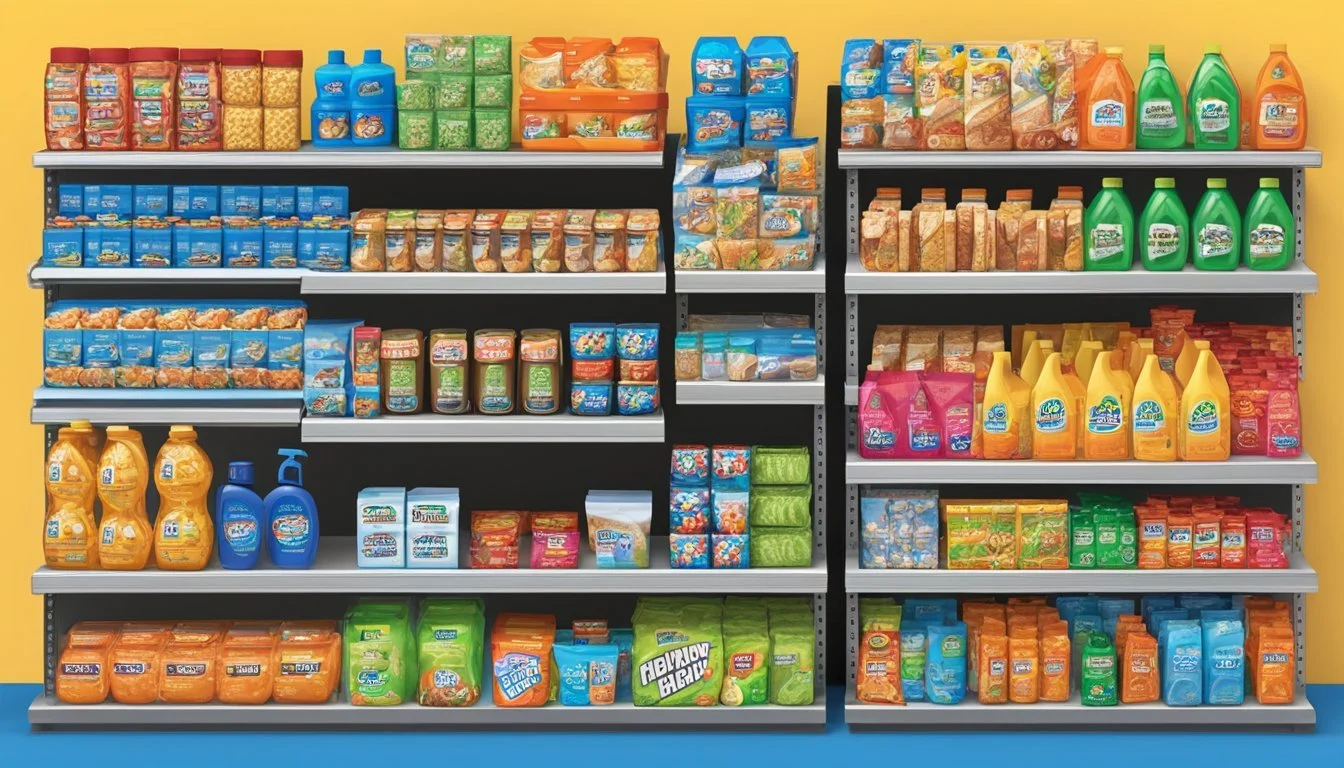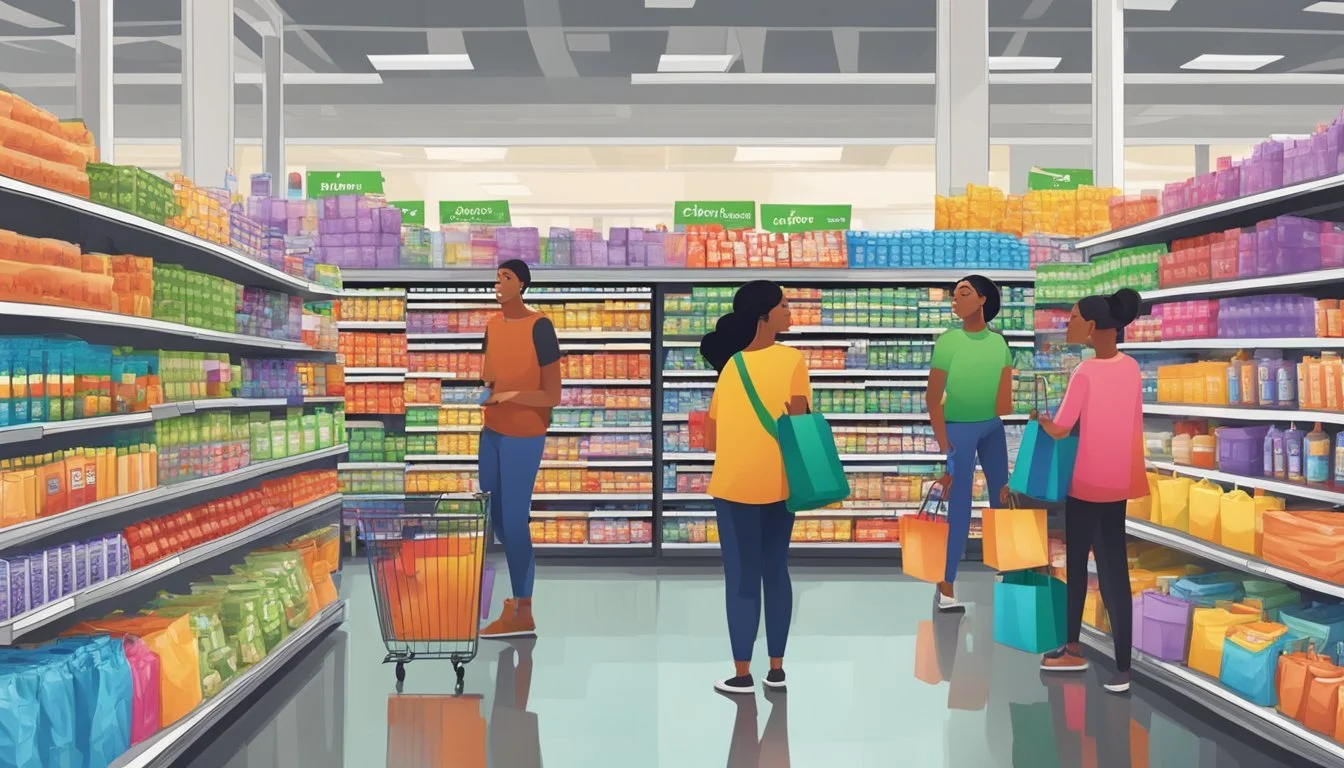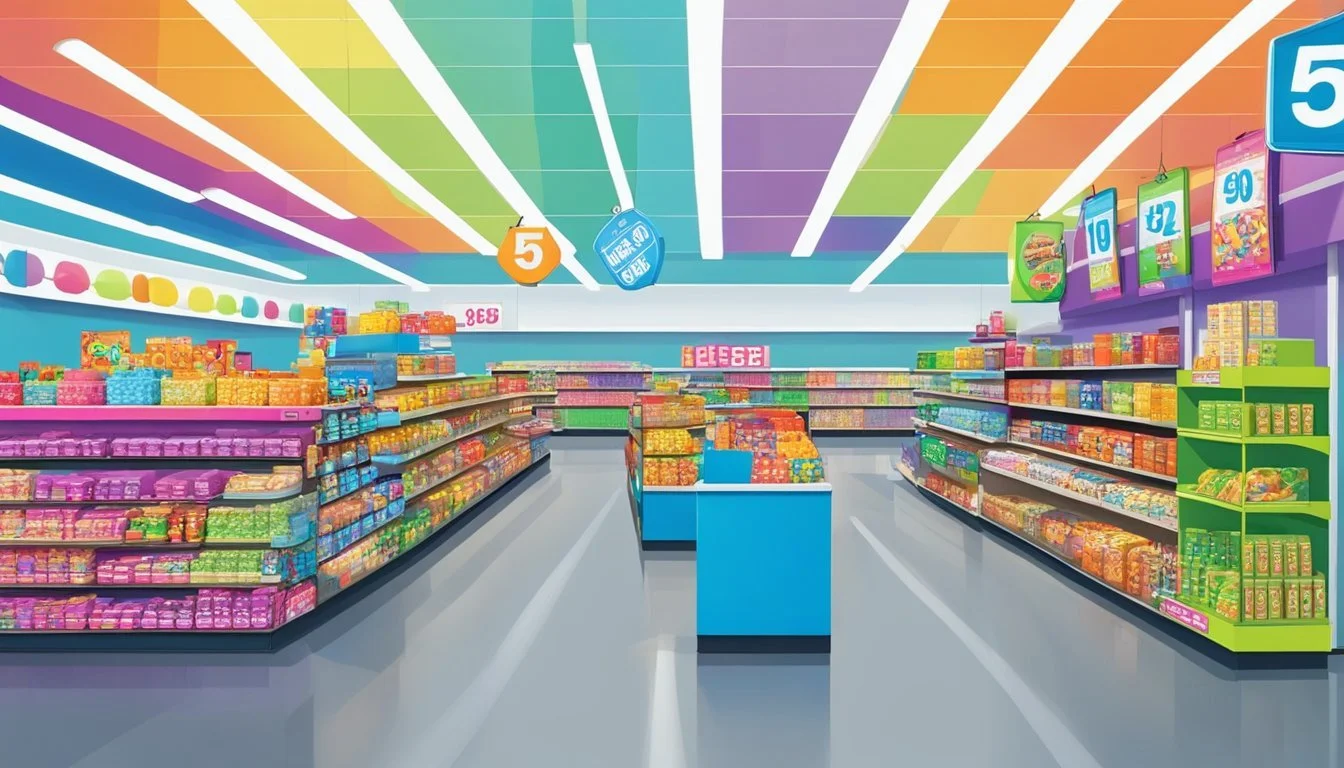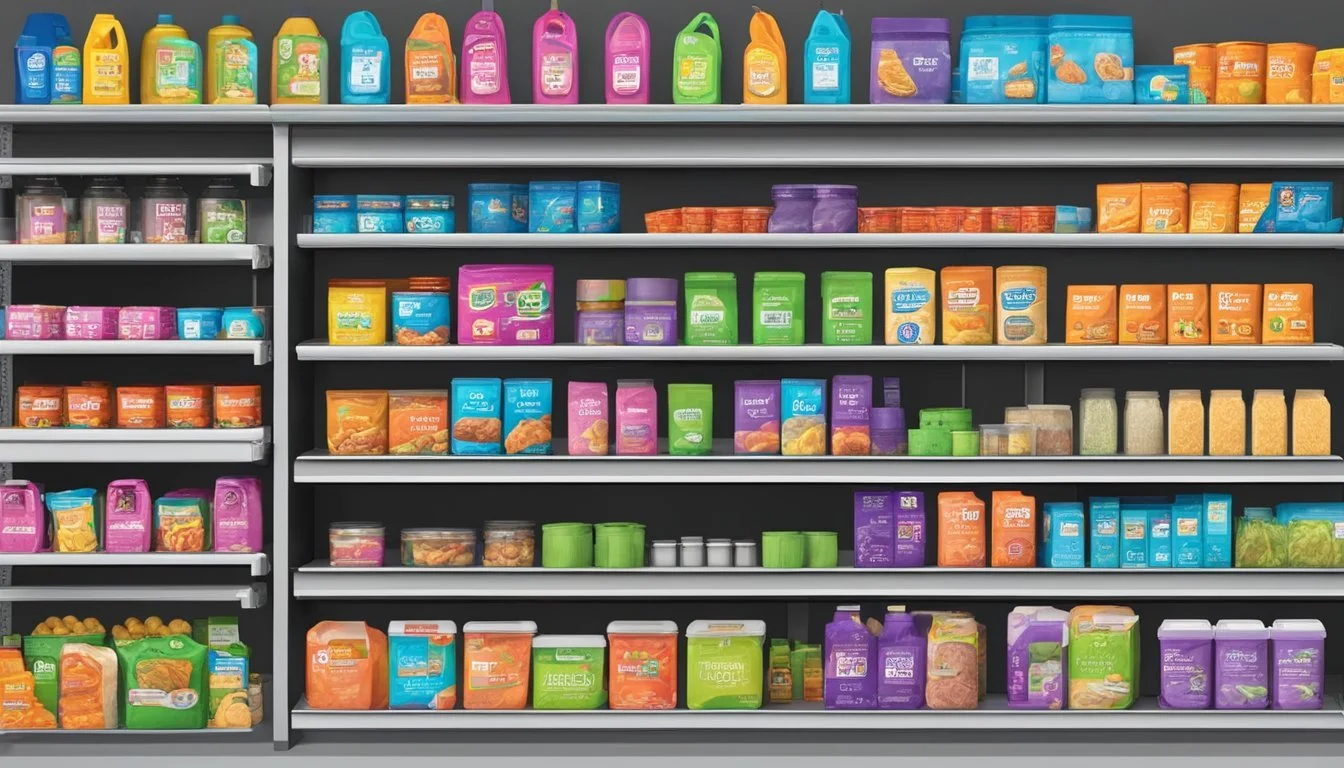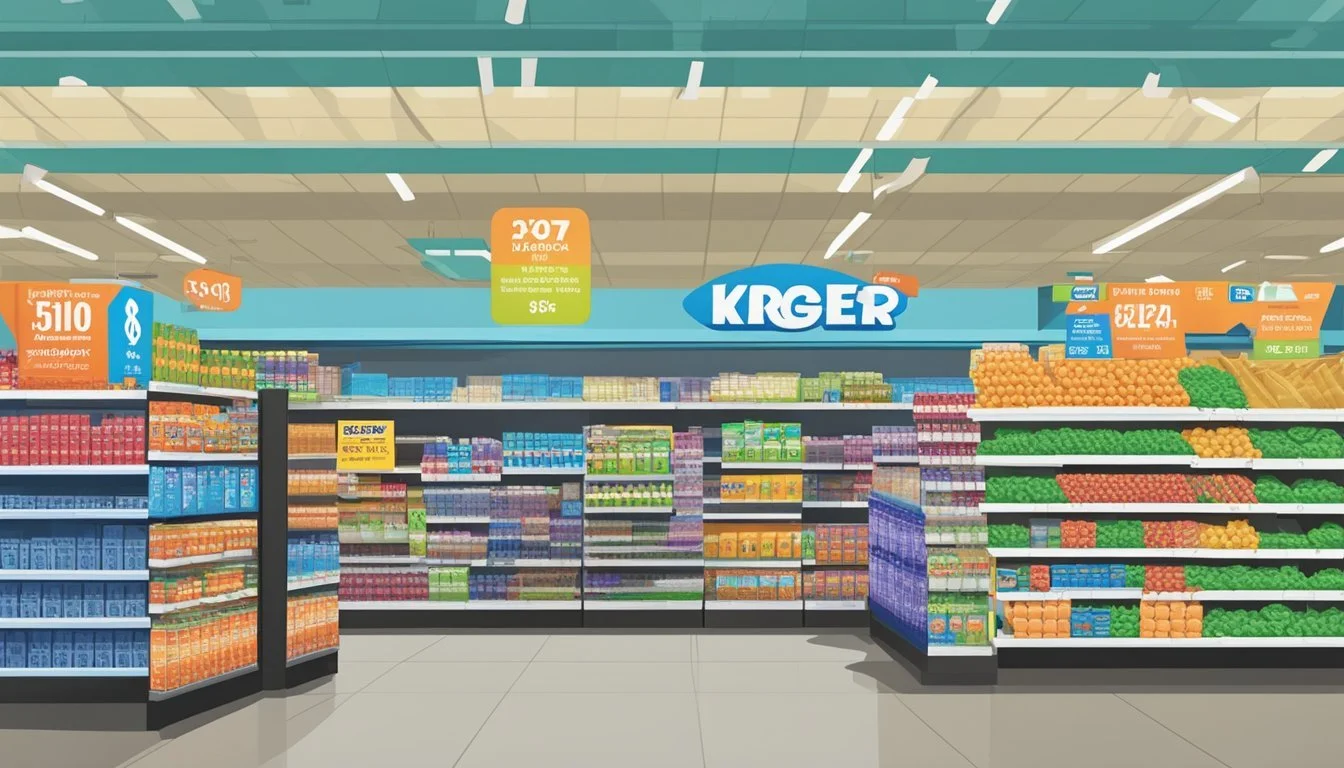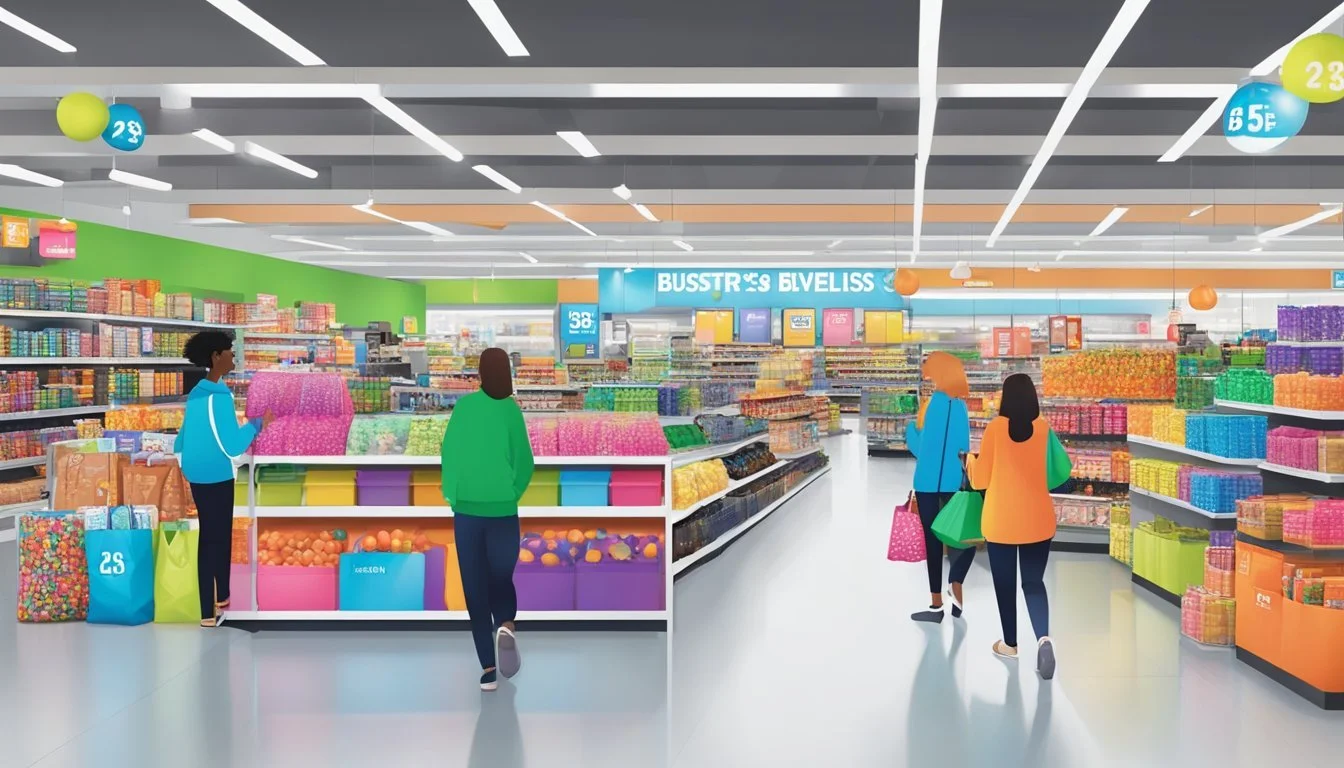Is Five Below Cheaper Than Kroger?
A Price Comparison Analysis
When comparing prices between Five Below and Kroger, shoppers may find themselves weighing different factors. Five Below is known for its low-cost items, primarily offering products at $5 or less. Kroger, on the other hand, is a full-service grocery chain with a wide range of products across various price points.
For specific items under $5, Five Below is likely to be cheaper than Kroger. This applies particularly to non-grocery items like accessories, toys, and basic household goods. However, Kroger's extensive grocery selection and frequent sales can make it more competitive for food items and everyday necessities.
Price-conscious consumers might find value in both stores depending on their shopping needs. Five Below excels in providing affordable non-essential items, while Kroger offers a broader selection of groceries with competitive pricing, especially when factoring in store loyalty programs and discounts.
Overview of Five Below and Kroger
Five Below and Kroger represent two distinct retail models catering to different consumer needs and preferences. These companies have unique histories, business strategies, and target demographics that shape their market positions.
Company Histories
Five Below, founded in 2002 by David Schlessinger and Tom Vellios, quickly established itself as a trendy discount store. The company's rapid growth led to its initial public offering in 2012. Five Below's expansion strategy focused on opening stores in high-traffic suburban areas and shopping centers.
Kroger's roots trace back to 1883 when Barney Kroger invested his life savings to open a grocery store in Cincinnati, Ohio. Over the decades, Kroger grew through mergers and acquisitions, becoming one of the largest supermarket chains in the United States. The company has adapted to changing consumer preferences by diversifying its offerings and embracing technology.
Business Models and Market Niches
Five Below operates as a specialty discount store, selling products priced at $5 or less. Its inventory includes trendy items across various categories such as toys, tech accessories, beauty products, and home decor. The company's business model relies on high-volume sales and frequent inventory turnover to maintain profitability.
Kroger, on the other hand, is a full-service supermarket chain offering a wide range of groceries, household items, and pharmacy services. The company leverages its scale to negotiate competitive prices with suppliers and invest in private-label brands. Kroger has also expanded into fuel centers, financial services, and digital platforms to enhance customer convenience and loyalty.
Target Demographics
Five Below primarily targets teens, tweens, and budget-conscious shoppers seeking affordable, trendy items. The store's bright, colorful layouts and ever-changing product mix appeal to younger consumers looking for fun, inexpensive products.
Kroger caters to a broader demographic, serving families, individuals, and households across various income levels. The supermarket chain offers products ranging from budget-friendly options to premium and organic selections, accommodating diverse consumer preferences and needs.
While both companies attract price-sensitive customers, their core target markets differ significantly in terms of age, shopping habits, and primary product interests.
Comparison of Product Offerings
Five Below and Kroger offer vastly different product selections to cater to distinct consumer needs. Their offerings vary significantly in terms of variety, quality, branding, and types of goods available.
Variety and Selection
Five Below focuses on budget-friendly items priced at $5 or less. Their inventory includes toys, games, tech accessories, beauty products, and home decor. The selection changes frequently, with seasonal items rotating throughout the year.
Kroger, as a full-service grocery store, provides a much broader range of products. They stock thousands of items across food, household goods, and personal care categories. Kroger offers fresh produce, meats, dairy, bakery items, and a wide array of packaged foods.
Five Below's limited price point restricts its product range, while Kroger aims to be a one-stop shop for diverse household needs.
Quality and Branding
Five Below primarily carries lower-cost items, often from lesser-known brands or unbranded products. Quality can vary, with some items being perceived as novelty or impulse purchases.
Kroger stocks a mix of national brands, regional favorites, and their own private label products. They offer different quality tiers, from budget-friendly options to premium and organic lines like Simple Truth.
In the grocery department, Kroger maintains quality standards for fresh produce, meats, and dairy products. Five Below does not compete in these perishable categories.
Store Brand Items Versus National Brands
Five Below rarely carries well-known national brands due to its price constraints. Most items are either unbranded or from lesser-known manufacturers.
Kroger offers an extensive range of private label products across various categories. These include:
Kroger brand (value option)
Private Selection (premium line)
Simple Truth (natural and organic products)
Kroger's store brands compete directly with national brands in quality and price. They also stock a wide selection of popular national brands across all departments.
Availability of Nonperishable and Perishable Goods
Five Below exclusively sells nonperishable items. Their food selection is limited to snacks, candy, and beverages that don't require refrigeration.
Kroger offers a full range of both perishable and nonperishable goods:
Perishables:
Fresh produce
Meats and seafood
Dairy products
Bakery items
Nonperishables:
Canned goods
Packaged foods
Household items
Personal care products
Kroger's selection caters to complete grocery needs, while Five Below focuses on discretionary, non-food items with occasional snack options.
Price Analysis
Five Below and Kroger employ distinct pricing strategies tailored to their product offerings and target markets. Their approaches to discounts, sales, and customer perceptions shape their overall value propositions.
Basic Price Comparison
Five Below's core concept revolves around offering products priced at $5 or less. This fixed price point sets it apart from traditional retailers like Kroger. While Kroger carries a wide range of groceries and household items at various price points, Five Below focuses on trendy, affordable merchandise.
Five Below's inventory includes toys, tech accessories, beauty products, and home decor. Kroger, on the other hand, stocks essential groceries, fresh produce, and everyday household items. Due to these differences, a direct item-by-item price comparison is challenging.
For specific product categories that overlap, such as snacks or basic school supplies, Five Below often offers lower prices. However, Kroger's broader selection and bulk options can provide better value for certain items.
Discounts and Sales
Both retailers utilize different discount strategies to attract customers. Five Below maintains its appeal through consistent low prices rather than frequent sales events. Their $5-and-below model eliminates the need for traditional markdown cycles.
Kroger employs a more dynamic approach to discounts. They offer weekly specials, digital coupons, and loyalty program rewards. Kroger's fuel points program provides additional savings on gasoline purchases.
Seasonal promotions are common at both stores. Five Below introduces themed collections for holidays and back-to-school seasons. Kroger runs holiday-specific sales on relevant grocery and household items.
Pricing Strategies and Customer Perceptions
Five Below's pricing strategy centers on perceived value and impulse purchases. By capping prices at $5, they create a perception of affordability and encourage customers to make spontaneous buys.
Kroger aims for competitive pricing in the grocery sector. They use a mix of everyday low prices on staple items and rotating discounts on others. This approach helps maintain customer loyalty and compete with other supermarket chains.
Customer perceptions of value differ between the two retailers. Five Below shoppers often seek trendy, low-cost items for immediate gratification. Kroger customers typically focus on overall grocery savings and the convenience of one-stop shopping for household essentials.
Five Below's limited price range can be both a strength and a limitation. It attracts budget-conscious shoppers but may deter those seeking higher-quality or specialty items. Kroger's varied pricing allows for a wider customer base but requires more active price comparison from shoppers.
Customer Experience
The customer experience at Five Below and Kroger differs significantly due to their distinct retail models and target demographics. Each store offers unique advantages in terms of service, layout, and employee interactions.
Service and Convenience
Five Below emphasizes a fun, treasure hunt-like shopping experience. The stores are typically smaller, making them quick to navigate. Self-checkout options are limited, but lines move quickly due to the low-price point items.
Kroger, as a full-service grocer, offers a wider range of conveniences. Many locations feature online ordering, curbside pickup, and home delivery services. Self-checkout lanes are common, reducing wait times during busy periods.
Kroger's loyalty program provides personalized discounts and fuel points, enhancing value for regular shoppers. Five Below lacks a comparable rewards system but maintains consistently low prices across all items.
Store Layout and Shopping Experience
Five Below stores are bright, colorful, and organized by product categories. Aisles are wide and uncluttered, facilitating easy browsing. The store layout encourages discovery, with new and seasonal items prominently displayed.
Kroger's layout is more traditional, with clearly marked departments. Grocery aisles are logically arranged, while specialty sections like bakery and deli are positioned around the store's perimeter. Digital price tags in many Kroger stores ensure accurate pricing and reduce staff workload.
Five Below's compact size allows for quick shopping trips. Kroger stores are larger, offering a comprehensive selection but requiring more time to navigate.
Employee Interaction and Customer Service
Five Below employs a younger workforce, often creating a casual, energetic atmosphere. Staff are typically available to assist with product locations but may have limited product knowledge due to the store's constantly changing inventory.
Kroger's employees are generally more experienced in their respective departments. Butchers, bakers, and produce staff often provide expert advice and personalized service. Customer service desks at Kroger handle returns, exchanges, and other inquiries.
Both retailers train staff to be friendly and helpful. Five Below focuses on creating a fun shopping environment, while Kroger emphasizes product knowledge and efficient service to handle a wider range of customer needs.
Specialized Sections
Five Below and Kroger offer distinct product selections tailored to different consumer needs. Their specialized sections cater to various shopping preferences and budgets.
Grocery and Fresh Food
Kroger excels in grocery offerings, providing a wide range of fresh produce, meats, dairy, and bakery items. Their produce section features bananas, salad greens, and seasonal vegetables. The meat department offers ground beef and chicken breasts at competitive prices. Kroger's dairy aisle stocks milk, cheese, and yogurt options. Their bakery produces fresh bread daily.
Five Below does not typically carry fresh groceries. Their food selection is limited to packaged snacks, candy, and beverages. These items are often priced at $5 or less, making them budget-friendly options for quick treats.
Household and Home Decor
Five Below offers a variety of affordable home decor items priced at $5 or less. Their selection includes:
Decorative pillows
Wall art
Small storage containers
Candles and diffusers
Kroger's home goods section is more limited but often includes practical household items like:
Cleaning supplies
Kitchen utensils
Basic bedding and bath products
Five Below's selection tends to be more trendy and seasonal, while Kroger focuses on everyday essentials.
Beauty and Personal Care
Both stores offer beauty and personal care products, but with different focuses:
Five Below:
Trendy makeup items
Novelty skincare products
Hair accessories
Affordable beauty tools
Kroger:
Name-brand toiletries
Pharmacy-grade personal care items
Wider range of skincare options
Baby care products
Kroger's selection is more comprehensive and includes higher-end brands, while Five Below emphasizes fun, budget-friendly options for younger consumers.
Electronics and Toys
Five Below specializes in low-cost electronics and toys:
Phone accessories (chargers, cases)
Headphones and speakers
Small electronic gadgets
Board games and puzzles
Novelty toys and collectibles
Kroger's electronics and toy sections are typically smaller:
Basic electronics (batteries, cables)
Seasonal toy selections
Limited video game accessories
Five Below offers a broader range of budget-friendly electronics and toys, making it a popular destination for these items compared to Kroger's more limited selection.
Comparative Shopping Categories
Five Below and Kroger offer distinct product ranges across various shopping categories. Their pricing strategies and selections differ significantly in key areas that impact consumer choices.
Pantry and Dry Goods
Five Below does not typically stock traditional pantry and dry goods. Its food offerings are limited to snacks and candy. Kroger, as a full-service grocery store, provides a wide array of pantry staples and dry goods.
Kroger's selection includes:
Flour, sugar, and baking ingredients
Canned vegetables and fruits
Rice, pasta, and grains
Condiments and sauces
Prices at Kroger for these items are generally competitive with other grocery chains. They often run promotions and offer store-brand alternatives to name-brand products at lower prices.
Frozen Foods and Beverages
Five Below's frozen food selection is minimal, usually consisting of novelty ice cream treats. Their beverage options are limited to shelf-stable drinks and small refrigerated items.
Kroger offers an extensive range of frozen foods:
Frozen vegetables and fruits
Ready-made meals and pizza
Ice cream and frozen desserts
Kroger's beverage selection includes:
Soft drinks and juices
Coffee and tea
Alcoholic beverages (where permitted)
Kroger's prices for frozen foods and beverages are typically lower than specialty stores but may be higher than discount chains.
Snacks and Quick Meals
This category is where Five Below and Kroger have some overlap. Five Below focuses on trendy, fun snacks and candies at $5 or less. Their selection often includes:
Unique flavored chips and crackers
Imported candy and chocolates
Gourmet popcorn and pretzels
Kroger offers a broader range of snacks and quick meals:
Traditional chips, crackers, and cookies
Granola bars and health-focused snacks
Microwaveable meals and instant noodles
Five Below's snack prices are capped at $5, making them competitive for novelty items. Kroger's prices vary but often include bulk options for better value.
Household Essentials
Five Below offers a limited selection of household essentials, focusing on decorative and fun items rather than practical necessities. Their inventory might include:
Colorful storage containers
Novelty cleaning tools
Decorative home accessories
Kroger provides a comprehensive range of household essentials:
Cleaning supplies and laundry detergents
Paper products (toilet paper, paper towels)
Basic kitchenware and utensils
Kroger's prices for household essentials are generally competitive with other grocery stores. They often have sales and promotions on these items.
Health and Wellness
Five Below's health and wellness section is limited and focuses more on fitness accessories and personal care items. They might offer:
Yoga mats and small exercise equipment
Hair accessories and beauty tools
Novelty personal care items
Kroger provides a more traditional health and wellness department:
Over-the-counter medications
Vitamins and dietary supplements
First aid supplies
Personal hygiene products
Kroger's prices for health and wellness items are typically in line with pharmacy chains. They often have store-brand alternatives that offer savings compared to name-brand products.
Financial Considerations
Comparing Five Below and Kroger requires examining their pricing strategies and product offerings. The impact on consumers' wallets varies based on shopping habits and specific items purchased.
Impact on Grocery Bill
Five Below's $5-and-under pricing model can lead to savings on certain items. Household goods, snacks, and seasonal products are often cheaper than at Kroger. However, Five Below's limited grocery selection means it can't fully replace traditional supermarket trips.
Kroger offers a wider range of groceries, including fresh produce and meats. Its prices on these staples are generally competitive with other supermarkets. Kroger's loyalty program and digital coupons can further reduce grocery bills for regular shoppers.
For non-perishables and household items, comparing prices between the two stores can yield savings. Shoppers may find better deals at Five Below for items like cleaning supplies or pantry staples.
Shopping on a Budget
Five Below caters to budget-conscious consumers with its fixed price points. This makes it easier to predict total spending. The store's focus on affordable items can help stretch limited funds.
Kroger provides budget-friendly options through its private label brands. These offer lower prices compared to name-brand products. The grocer's weekly sales and personalized discounts can benefit those on tight budgets.
Smart shoppers can combine strategies by purchasing budget-friendly items at Five Below and utilizing Kroger's deals for essential groceries. This approach maximizes savings across both stores.
Comparing Bulk and Single-Purchase Prices
Kroger often offers better value for bulk purchases. Family-sized packages and multi-packs typically have lower per-unit costs. This can lead to significant savings for frequently used items.
Five Below's $5 limit means bulk options are limited. However, its single-purchase prices on certain items can be lower than Kroger's individual unit costs. This benefits shoppers who need smaller quantities or have storage constraints.
Comparing unit prices between the two stores is crucial. While Five Below may seem cheaper at first glance, Kroger's bulk options could provide better long-term value for some products. Shoppers should consider their usage patterns and storage capacity when deciding between bulk and single-item purchases.
External Factors and Industry Trends
Economic conditions and product safety issues significantly impact retail pricing and consumer behavior. These factors shape the competitive landscape between discount stores like Five Below and traditional grocers like Kroger.
Economic Influences on Pricing
Inflation and supply chain disruptions affect retail prices across the board. Five Below has maintained its $5-and-below pricing model despite inflationary pressures, though they've introduced "Five Beyond" sections with higher-priced items. Kroger, as a grocer, faces more volatility in food prices.
Economic downturns often drive consumers to seek out discounts and lower-priced alternatives. This trend can benefit Five Below's budget-friendly offerings. Kroger counters with increased promotions and expansion of its private label brands to offer competitive pricing.
Product Recalls and Safety
Product recalls impact both retailers but in different ways. Five Below, selling a variety of non-food items, faces recalls on toys, electronics, and household goods. Kroger, with its focus on groceries, deals more with food safety recalls.
The FDA maintains a product recall database that consumers can check. Retailers must act quickly to remove recalled items from shelves. Kroger's larger scale and food-centric inventory require robust systems to manage recalls efficiently.
Product safety concerns can influence consumer trust and shopping preferences. Kroger's emphasis on fresh produce and higher quality products may provide an advantage in this area.


